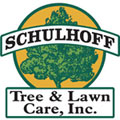Trees give your property a beautiful and pristine look. They create stunning backyard landscapes and enhance the allure of corporate office buildings. But unfortunately, your trees’ value may come under threat if you have invasive parasites. Tree funguses and bacteria often cause severe aesthetic and structural damage, ruining your yard and endangering your trees.
So how do you fight back and protect your trees?
The key to any battle is knowledge. You need to know what disease your trees face and how to defeat it. With the proper information, you can identify infections and prevent them before they permanently harm your trees. Start learning more now with the following descriptions of the more common tree diseases in Colorado.
Cytospora Canker
Cytospore cankers grow between tree bark and also create rings around branches and trunks. If cankers develop, their girdles will kill parts of the tree above the ring. Most trees become susceptible to the fungus when they have preexisting root damage, or when they become stressed. Keep an eye on your trees with recent wounds, especially apple, birch, elm, maple, spruce, and willow trees.
Bacteria Wetwood
As one of the more prominent tree infections, bacteria wetwood has several strains and affects several types of leaf and shade trees. Look for changes in the wood color-trees with this disease often change to a more rotten yellow-brown around the center of the tree. The wood creates toxic ooze and gas that inhibits growth and healing. Also keep an eye out for a white froth called “alcohol flux,” which accompanies advanced cases.
Shoot Blight
Shoot blight spreads through aspens during periods of warm temperatures and heavy rain. The fungus absorbs through the leaves and chokes the branches. Often the leaves die quickly, so look for black spots or leaves. More advanced cases can cause the branches to curl into a “shepherds crook.”
Marssonina Blight
Marssonina blight primarily affects aspen trees, as well as some poplars. You can identify the infestation by the brown spots with yellow rings that form on the leaves. Leaves will eventually decay and drop in the summer, rather than the fall. The infection isn’t life threatening, but it does stress the tree, opening it to further problems.
Powdery Mildew
As the name suggests, this fungus grows as a white mildew on any surface of the tree. Most plants, including bushes and shrubs, can contract this disease. The mildew doesn’t kill the tree, but it interrupts photosynthesis and causes increased stress.
Anthracnose
Antharacnose mainly targets sycamore trees. The mold causes deep lesions and cankers that cut off water flow to the leaves. As a result, bunches of leaves and twigs die and fall to the ground, further spreading the fungus and killing the tree.
Needlecast
Needlecast affects most evergreens. The fungi causes pines to lose all of their needles and prematurely die. However, you might confuse its symptoms with frost damage or nutrient deficiency. You can tell the difference by the blistered ridges that grow on the ends of dead needles.
Fire Blights
This bacteria targets rose family trees such as apple, crabapple, and pear trees. The bacteria spreads through tree wounds where it will form an ooze. On some occasions, animals will carry the ooze to the flower blossoms. Here the bacteria will spread down the tree, eventually girdling and kill large portions.
How to Prevent Infections
Your trees face many threats. Fortunately, you have access to many prevention methods that can safeguard your trees from the fungus and bacteria common to Colorado. Effective preventative measures include:
- Regular pruning
- Adequate nutrients, especially nitrogen
- Leaf cleanup
In addition, professional pesticide treatments protect trees when all other measures fail. Look for injection methods, since they concentrate the fungicide in the tree and provide a safer alternative to external pesticide sprays. If you identify an infection or want to protect a tree, contact professional arborists today for added protection.
